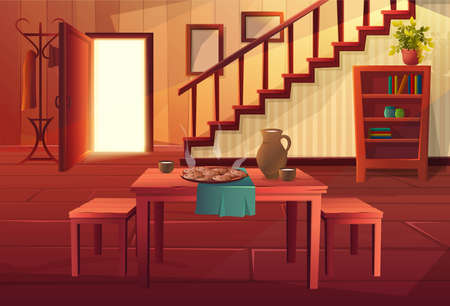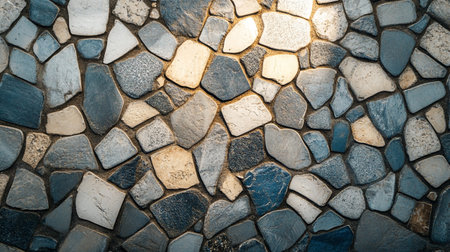Introduction to Natural Stone and Slate in the UK
Natural stone and slate have long been cherished materials within British architecture and interior design, evoking a sense of heritage and sophistication that transcends fleeting trends. These surfaces have graced everything from stately homes to contemporary apartments, reflecting an appreciation for authenticity, durability, and understated elegance. The enduring popularity of natural stone and slate in the UK is closely tied to their innate ability to define spaces with a timeless appeal—whether used for majestic façades, welcoming entrance halls, or tranquil bathrooms. Beyond their visual allure, these materials carry with them centuries of craftsmanship, connecting modern spaces to the legacy of British building traditions. Today, as homeowners and designers seek both beauty and environmental responsibility, responsibly sourced natural stone and slate are at the heart of a movement towards sustainable luxury—a blend of aesthetic grace and mindful sourcing that continues to shape Britain’s most inspiring interiors.
2. The Heritage and Character of British Quarried Stone
The story of British quarried stone is woven into the very fabric of the nation’s architectural heritage, from grand cathedrals to humble cottages. Every region of the UK offers its own distinct geological palette, creating surfaces that are not only practical but also deeply evocative of place and history. Exploring regional variations reveals how the landscape shapes both the built environment and local identity.
Regional Variations: A Patchwork of Distinction
Across England, Scotland, and Wales, natural stone and slate have long been extracted for their durability and inherent beauty. The following table highlights some renowned varieties and their typical characteristics:
| Region | Stone/Slate Type | Visual Qualities | Historical Usage |
|---|---|---|---|
| Cotswolds | Cotswold Limestone | Warm honey hues, fine grain | Traditional cottages, walls |
| Yorkshire | Yorkstone | Buff-grey tones, rugged texture | Paving, townhouses, churches |
| Cornwall & Wales | Cornish/Welsh Slate | Deep blue-greys, subtle sheen | Roofing, floors, memorials |
| Scotland | Caithness Stone | Dark olive to grey-black, dense structure | Pavements, public buildings |
The Historical Relevance of Local Stone
The use of indigenous stone was not merely a matter of convenience; it was integral to the character and longevity of Britain’s architectural legacy. Medieval masons selected stones for cathedrals and castles based on strength as well as proximity. This local sourcing fostered a visual harmony between buildings and landscapes—an aesthetic echoed in today’s responsible design ethos.
Unique Visual Qualities: Beyond Functionality
The charm of British stone lies in its nuanced colours, veining, and tactile textures. From the fossil-rich patterns of Portland limestone to the dramatic riven surfaces of Welsh slate, these materials evoke both a sense of permanence and understated elegance. Such qualities allow designers to create contemporary spaces that remain rooted in tradition.
A Living Connection to Place
Selecting locally quarried stone is more than a stylistic choice; it is an act of cultural stewardship. Each slab or tile carries with it centuries of craftsmanship and a story unique to its region—making every installation a living testament to Britain’s enduring relationship with its natural resources.

3. Responsible Sourcing Practices
In the UK, responsible sourcing of natural stone and slate is not merely a trend but an essential commitment to environmental stewardship and ethical practice. As demand for these tactile, timeless materials continues to rise in both residential and commercial design, the focus has shifted towards ensuring that every slab and tile is procured with care for both people and planet. Ethical sourcing begins at the quarry, where eco-conscious methods such as reduced water usage, controlled blasting, and land rehabilitation are prioritised. These practices significantly minimise ecological disturbance, preserve local habitats, and help maintain the integrity of rural landscapes so characteristic of the British countryside.
Relevant certifications play a pivotal role in upholding these standards. The Ethical Stone Register and BES 6001 (Responsible Sourcing of Construction Products) are two prominent UK-based frameworks that guide suppliers and specifiers alike. Membership or certification ensures traceability, fair labour conditions, and transparency across the supply chain—from extraction through to installation. Additionally, many British quarries now collaborate closely with local communities to support regional economies while safeguarding heritage sites and biodiversity.
By embracing responsibly sourced stone and slate, UK designers, architects, and homeowners contribute to a more sustainable future without compromising on quality or aesthetics. This conscious approach harmonises beautifully with contemporary British interiors, where material provenance and authenticity are increasingly valued. Ultimately, choosing certified surfaces allows us to celebrate the enduring allure of natural stone while respecting our shared responsibility to protect the environment for generations to come.
4. Design Potential: Integrating Stone and Slate into Contemporary Spaces
Natural stone and slate offer extraordinary versatility for British homes, effortlessly bridging the gap between tradition and innovation. Their timeless appeal makes them a favourite in both classic Georgian terraces and modern new-builds, providing a tactile connection to the UK’s landscape. To make the most of these materials, it’s essential to consider not just their inherent beauty but also the finishes, layouts, and thoughtful design details that elevate interiors and exteriors alike.
Classic Meets Modern: Inspiring Applications
Stone and slate can be used to create striking focal points or subtle backdrops, adapting to various room styles and functional needs. In period properties, honed limestone flooring maintains historical character while offering practical durability. Meanwhile, split-face slate cladding introduces dramatic texture to contemporary kitchens or living areas—perfect for those seeking a bold visual statement.
Finishes Tailored for British Homes
| Finish Type | Best Application | Design Effect |
|---|---|---|
| Honed | Kitchens, Bathrooms | Sleek, refined surfaces; understated elegance |
| Tumbled | Hallways, Conservatories | Aged appearance; complements traditional décor |
| Riven | Fireplaces, Feature Walls | Textural interest; rustic yet contemporary edge |
| Polished | Reception Rooms, Stairs | Luminous finish; enhances light and sense of space |
Layout Ideas and Design Tips
- Mosaic Patterns: Use small-format stone tiles in herringbone or chevron layouts for hallway floors—a nod to Victorian craftsmanship with a modern twist.
- Large Format Slabs: Opt for oversized slate slabs in open-plan living spaces to create seamless visual flow, especially effective in homes with bi-fold doors opening onto patios.
- Zoning with Colour: Combine lighter stones with darker slates to define kitchen islands or shower enclosures without relying on artificial partitions.
- Outdoor Continuity: Extend interior stone flooring out onto terraces for an indoor-outdoor feel—a particularly British solution for making the most of garden views during unpredictable weather.
- Sustainable Detailing: Use locally sourced reclaimed stone as accent pieces on hearths or window sills, blending sustainability with bespoke charm.
The creative integration of natural stone and slate transforms spaces by infusing them with enduring character. Whether restoring heritage features or embarking on avant-garde renovations, these responsibly sourced surfaces provide British homes with beauty, practicality, and a distinct sense of place.
5. Maintenance and Longevity
Caring for Natural Stone and Slate in the UK
Natural stone and slate are celebrated for their resilience, but the British climate—with its damp winters and unpredictable rainfall—demands tailored care to ensure these surfaces remain pristine. Routine maintenance is essential not only to preserve their beauty but also to safeguard the investment in your home’s design.
Routine Cleaning: Gentle Yet Effective
In the UK, where mud and moisture are frequent visitors, regular sweeping and gentle mopping with pH-neutral cleaners are key. Avoid acidic or abrasive products that can erode the stone’s surface or damage the unique textures of slate. For exterior applications, periodic jet washing on a low setting helps remove moss or algae without harming the stone’s integrity.
Dealing with Damp and Stains
The UK climate can encourage mildew, particularly in less ventilated spaces. Promptly addressing spills and regularly drying surfaces will reduce staining and deter mould growth. For stubborn marks, use specialist stone cleaners recommended by your supplier—these are formulated to tackle stains while respecting the material’s natural finish.
Sealing for Lasting Protection
Sealing is crucial for longevity, especially in kitchens, bathrooms, and outdoor areas exposed to the elements. Many British homeowners choose breathable sealants that repel moisture but allow the stone to ‘breathe’, preventing trapped water from causing frost damage during cold snaps.
Professional Advice for Enduring Appeal
If you’re unsure which products suit your specific stone or slate, consult with local experts or your supplier. Many UK specialists offer tailored advice based on regional weather patterns and the specific characteristics of your chosen material.
Timeless Beauty Through Thoughtful Care
With a considered approach to cleaning, sealing, and maintenance, responsibly sourced natural stone and slate will reward you with enduring elegance. Embracing a little regular care ensures these surfaces withstand the rigours of British weather while ageing gracefully—making them a sustainable choice that grows more beautiful over time.
6. Supporting Local Craftsmanship and Eco-Responsibility
Embracing natural stone and slate in the UK is not just a design choice—it’s an investment in local heritage, skilled artisanship, and environmental stewardship. By choosing materials responsibly sourced from within Britain, we directly support UK-based stonemasons and craftspeople whose knowledge has been refined over generations. Their hands shape each piece with an artistry that mechanical processes cannot replicate, ensuring every project carries a unique sense of place and provenance.
Championing British Artisans
The tradition of working with stone runs deep in the UK’s architectural DNA. From Cotswold cottages to Yorkshire dry stone walls, local craftspeople infuse their work with regional character and time-honoured techniques. By prioritising locally quarried stone and slate, we reinforce these traditions and help preserve the livelihoods of artisans who are integral to our built environment’s identity.
Building Sustainable Supply Chains
Supporting domestic supply chains reduces transportation emissions, minimises resource wastage, and bolsters traceability. When homeowners, architects, and designers opt for British-sourced materials, they foster a market where sustainability is paramount—where ethical quarrying practices and responsible land management are non-negotiable standards.
A Greener Future through Collaboration
Every project that celebrates UK-sourced natural stone and slate contributes to a greener, more circular economy. It encourages collaboration between designers, suppliers, and craftsmen who share a commitment to reducing environmental impact while elevating the beauty of our spaces. Ultimately, supporting local craftsmanship is not only about aesthetics—it’s about cultivating a sustainable legacy for future generations within Britain’s architectural landscape.


